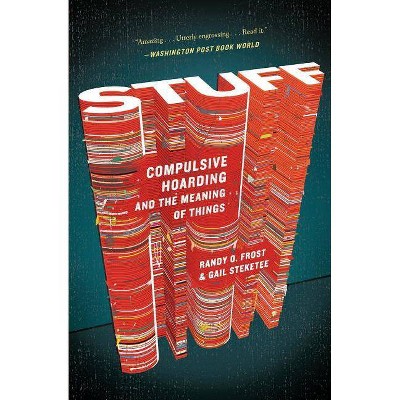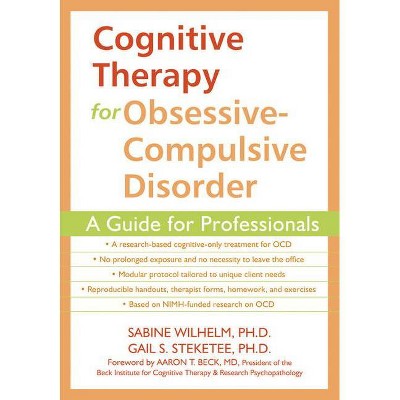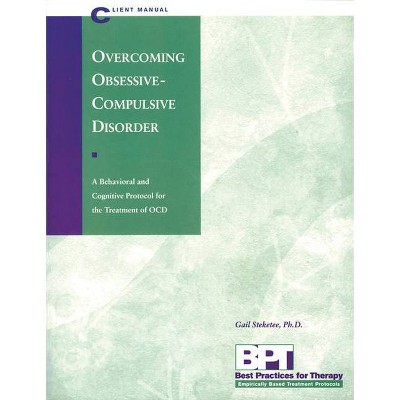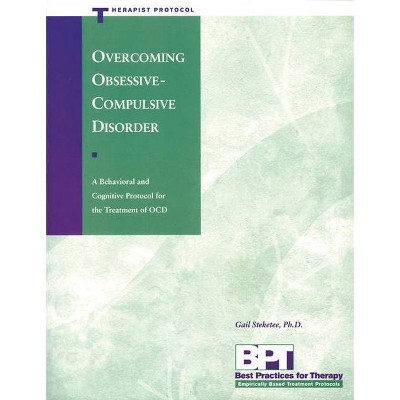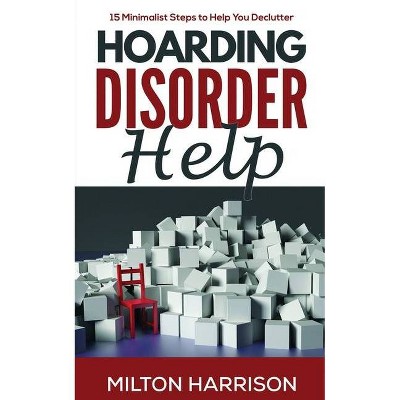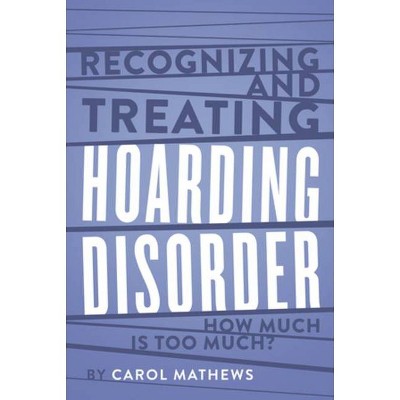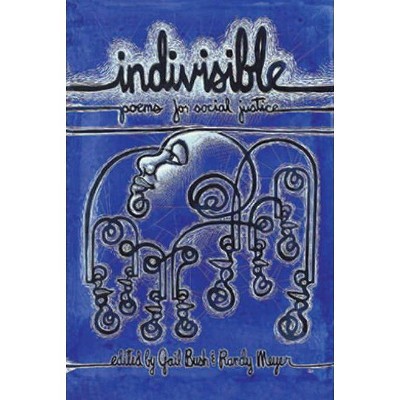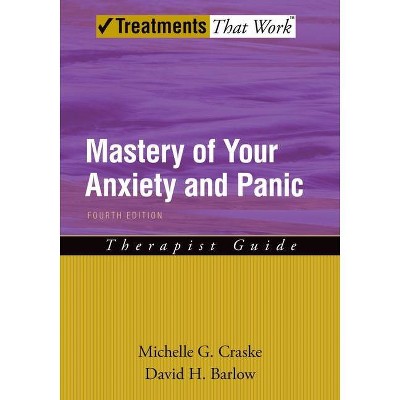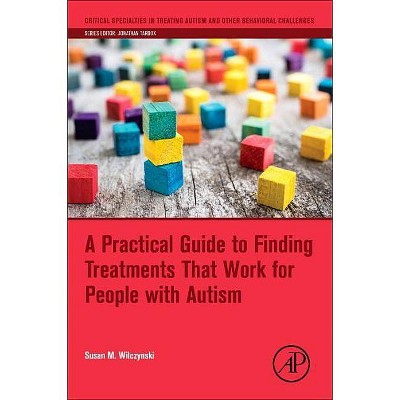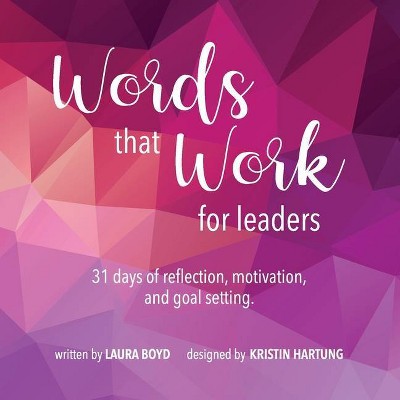Treatment for Hoarding Disorder - (Treatments That Work) 2nd Edition by Gail Steketee & Randy O Frost (Paperback)
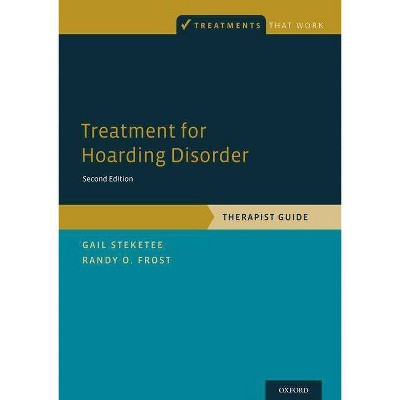
Similar Products
Products of same category from the store
AllProduct info
<p/><br></br><p><b> About the Book </b></p></br></br>"The relationship people have with their possessions ranges from purely utilitarian to intensely emotional. For most people, their personal possessions provide them with a sense of security, comfort, and pleasure. However, if someone loses the ability to distinguish useful or important possessions from those that make life overly complicated, the objects can become a prison. For people who suffer from Hoarding Disorder (HD), the process of getting rid of unneeded objects is not easy. For them, possessions never "feel" unneeded and trying to get rid of them is an excruciating emotional ordeal. This Second Edition of Treatment for Hoarding Disorder is the culmination of more than 20 years of research on understanding hoarding and building an effective intervention to address its myriad components. Thoroughly updated and reflective of changes made to the Fifth Edition of the Diagnostic and Statistical Manual for Mental Disorders (DSM-5), this second edition of the Therapist Guide and accompanying client Workbook outlines an empirically supported and effective CBT program for treating hoarding disorder. This Therapist Guide is written for mental health clinicians-psychologists, social workers, psychiatrists, counselors, and psychiatric nurses-to guide effective treatment of people with hoarding disorder. It provides numerous assessment and intervention forms to help clients use the methods described in the intervention. A major goal of the treatment is to recapture the positive role of possessions in the lives of people with hoarding problems, and strategies are outlined for sustaining gains and making further progress, as well as for managing stressful life events that can provoke problematic acquiring and difficulty discarding"--<p/><br></br><p><b> Book Synopsis </b></p></br></br>The relationship people have with their possessions ranges from purely utilitarian to intensely emotional. For most people, their personal possessions provide them with a sense of security, comfort, and pleasure. However, if someone loses the ability to distinguish useful or important<br>possessions from those that make life overly complicated, the objects can become a prison. For people who suffer from Hoarding Disorder (HD), the process of getting rid of unneeded objects is not easy. For them, possessions never feel unneeded and trying to get rid of them is an excruciating<br>emotional ordeal. <p/>This Second Edition of <em>Treatment for Hoarding Disorder </em>is the culmination of more than 20 years of research on understanding hoarding and building an effective intervention to address its myriad components. Thoroughly updated and reflective of changes made to the Fifth Edition of the <em>Diagnostic and</em><br><em>Statistical Manual for Mental Disorders </em>(DSM-5), this second edition of the <em>Therapist Guide </em>and accompanying client <em>Workbook</em> outlines an empirically supported and effective CBT program for treating hoarding disorder. This <em>Therapist Guide </em>is written for mental health clinicians-psychologists, social<br>workers, psychiatrists, counselors, and psychiatric nurses-to guide effective treatment of people with hoarding disorder. It provides numerous assessment and intervention forms to help clients use the methods described in the intervention. A major goal of the treatment is to recapture the positive<br>role of possessions in the lives of people with hoarding problems, and strategies are outlined for sustaining gains and making further progress, as well as for managing stressful life events that can provoke problematic acquiring and difficulty discarding.<br><p/><br></br><p><b> About the Author </b></p></br></br><br><strong>Dr. Gail Steketee</strong> is Dean and Professor at the Boston University School of Social Work. Her scholarly work has focused on developing and testing treatments for obsessive compulsive spectrum disorders, especially hoarding symptoms in recent years. Dr. Steketee has published over 200 articles and<br>chapters, and over a dozen books on these topics, including therapist guides, client workbooks, edited volumes, and self-help books on hoarding and related conditions. She gives frequent lectures, workshops, and media interviews on hoarding and related conditions to professional and public audiences<br>in the U.S. and abroad. <p/><strong>Dr. Randy O. Frost</strong> is the Israel Professor of Psychology at Smith College and an international expert on hoarding and related phenomena. He has published over 150 scientific articles and book chapters on these topics. Dr. Frost has co-authored several books on hoarding and was awarded the Lifetime<br>Achievement Award for excellence in innovation, treatment, and research in the field of hoarding and cluttering by the Mental Health Association of San Francisco. He gives frequent lectures, workshops, and media interviews on the topic of hoarding and related conditions.<br>
Price History
Cheapest price in the interval: 62 on October 27, 2021
Most expensive price in the interval: 62 on November 6, 2021
Price Archive shows prices from various stores, lets you see history and find the cheapest. There is no actual sale on the website. For all support, inquiry and suggestion messages communication@pricearchive.us
